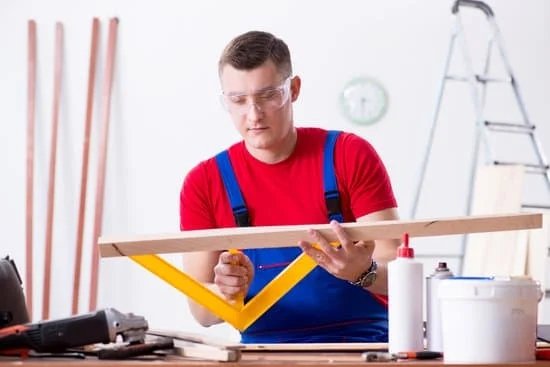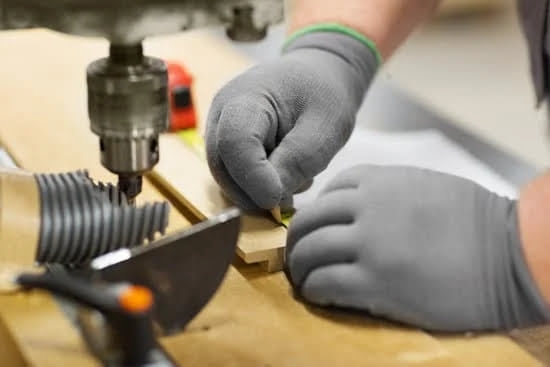Woodworking machines play a crucial role in any woodworking project, providing efficiency, precision, and versatility to the craft. These machines come in various types, each designed for specific tasks and applications. From shaping and cutting to carving and finishing, woodworking machines have revolutionized the way woodworkers create their masterpieces.
When it comes to the types of woodworking machines available, there is a wide array to choose from. Understanding the differences and functionalities of each machine is essential for woodworkers looking to enhance their skills and productivity. Whether you are a hobbyist or a professional craftsman, having the right woodworking machine can make a significant impact on the quality of your work.
In this article, we will delve into the world of woodworking machines, exploring their importance in modern woodworking practices. We will also take a closer look at the different types of woodworking machines available on the market today, from power tools to stationary machines. By understanding these tools and their capabilities, woodworkers can better select the right equipment for their projects, leading to efficient and successful outcomes.
Understanding the Importance of Woodworking Machines
Woodworking machines play a crucial role in the woodworking industry, providing efficiency, precision, and consistency in creating wooden products. From crafting intricate designs to shaping large pieces of lumber, these machines offer a wide range of capabilities that help woodworkers bring their projects to life. Without the use of woodworking machines, tasks that would otherwise be time-consuming and labor-intensive can be completed with greater ease and speed.
One of the key reasons why woodworking machines are important is their ability to automate repetitive tasks. This saves woodworkers valuable time and allows them to focus on more creative aspects of their projects. Additionally, woodworking machines enable consistent results, ensuring that each piece produced meets the desired specifications. Whether cutting, shaping, or finishing wood, these machines provide a level of accuracy that is hard to achieve through manual methods alone.
The variety of types of woodworking machines available cater to different needs and preferences of woodworkers. From handheld power tools like circular saws and jigsaws to stationary machines like table saws and planers, there is a machine for every woodworking task.
Each type offers unique features and benefits that contribute to the overall efficiency and quality of the finished product. By understanding the importance of woodworking machines and choosing the right one for the job, woodworkers can enhance their craftsmanship and productivity in the workshop.
Exploring Different Types of Woodworking Machines
Woodworking machines are essential tools for anyone engaged in woodworking projects, from hobbyists to professionals. These machines help in creating precise cuts, shaping and finishing wood with efficiency and accuracy. There are various types of woodworking machines available in the market, each serving different purposes depending on the specific tasks at hand.
One of the most common types of woodworking machines is the table saw. This versatile machine is used for making straight cuts in wood pieces and can be adjusted to create different angles as needed. Another popular woodworking machine is the jointer, which is utilized for flattening and smoothening uneven edges of wood boards. The planer, on the other hand, assists in reducing the thickness of wood boards to achieve uniformity.
In addition to these basic types of woodworking machines, there are more specialized options available such as band saws, scroll saws, wood lathes, and spindle moulders. Each of these machines serves a unique purpose in woodworking projects and offers various features to cater to different needs and preferences of woodworkers.
Whether it’s cutting intricate designs with a scroll saw or shaping wooden objects with a lathe, having a diverse range of woodworking machines is crucial for achieving high-quality results in your projects.
| Types of Woodworking Machines | Description |
|---|---|
| Table Saw | Mainly used for making straight cuts in wood pieces. |
| Jointer | Utilized for flattening and smoothening uneven edges of wood boards. |
| Planer | Helps reduce the thickness of wood boards to achieve uniformity. |
Overview of Power Tools in Woodworking
Power tools play a crucial role in woodworking, providing efficiency, precision, and versatility to craftsmen of all levels. Whether you are a beginner or an experienced woodworker, having the right power tools can significantly impact the quality of your projects. Here is an overview of some essential power tools commonly used in woodworking:
- Power Drill: A versatile tool that can be used for drilling holes, driving screws, and even sanding with the right attachments. It comes in corded and cordless varieties, offering flexibility depending on your workspace and needs.
- Circular Saw: Perfect for making straight cuts in plywood, boards, and other materials. With different blade options available, you can achieve various cutting depths and angles for your woodworking projects.
- Jigsaw: Ideal for cutting curves and intricate shapes in wood. This handheld tool is easy to maneuver and control, making it a must-have for both beginners and seasoned woodworkers.
In addition to these power tools, there are many others like the miter saw, random orbital sander, and router that are essential in any woodworking workshop. Each tool serves a specific purpose and can help bring your creative vision to life with precision and speed.
When investing in power tools for woodworking, it is essential to consider factors such as durability, ease of use, safety features, and compatibility with accessories. Researching different brands and models will ensure that you choose the right tools for your projects while staying within your budget. With the right power tools by your side, you can take your woodworking skills to the next level and create beautiful pieces with efficiency and accuracy.
Detailed Analysis of Stationary Woodworking Machines
Stationary woodworking machines are essential tools for any serious woodworker. These machines are designed to stay in one place and are commonly used for precision cutting, shaping, and finishing tasks. They offer stability and accuracy, making them ideal for projects that require consistency and high-quality results.
Table Saw
One of the most common stationary woodworking machines is the table saw. This versatile tool consists of a flat table surface with a circular blade that protrudes from the center. Table saws are perfect for making straight cuts on large pieces of wood, such as plywood or lumber. They can also be equipped with various accessories for different types of cuts, including rip cuts, crosscuts, and bevel cuts.
Jointer
Another important stationary woodworking machine is the jointer. This machine is used to create flat surfaces and straight edges on rough lumber. By running the wood over the rotating blades of the jointer, you can achieve smooth and uniform surfaces that are essential for precise joinery work.
Planer
A planer is a stationary woodworking machine that is used to adjust the thickness of lumber. By feeding rough lumber through the planer’s rotating blades, you can achieve consistent thickness across your project materials. Planers are crucial for ensuring that all pieces of wood in a project are uniform in size and thickness, which is essential for proper fitting and assembly.
Comparison of Handheld and Fixed Base Routers
When it comes to woodworking, routers are essential tools that help in shaping and carving wood. There are two main types of routers commonly used in woodworking: handheld routers and fixed base routers. Each type has its own unique features and benefits, making them suitable for different types of projects.
Handheld routers are portable and versatile tools that are commonly used for freehand routing work. These routers are lightweight and easy to maneuver, making them ideal for tasks like trimming edges, cutting patterns, and creating intricate designs. Handheld routers also come with adjustable speed settings, allowing woodworkers to customize their cutting experience based on the project requirements.
On the other hand, fixed base routers are more stable and precise than handheld routers. They are mounted on a base that can be adjusted to set the depth of the cut accurately. Fixed base routers provide consistent results and are perfect for tasks that require precision, such as creating dado joints or cutting grooves. These routers are commonly used in cabinetry and furniture making due to their accuracy and control over the cutting process.
Overall, the choice between a handheld router and a fixed base router depends on the specific needs of your woodworking project. If you require mobility and flexibility in your work, a handheld router may be more suitable. However, if accuracy and stability are paramount, a fixed base router would be the better option. Understanding the differences between these two types of woodworking machines will help you make an informed decision when selecting the right tool for your next project.
Benefits of CNC Woodworking Machines
Computer Numerical Control (CNC) woodworking machines have revolutionized the woodworking industry, offering a range of benefits that make them a popular choice among woodworkers. These machines use computer-controlled systems to automate the cutting, carving, and shaping of wood with precision and accuracy. With CNC woodworking machines, intricate designs can be achieved with consistent results, making them ideal for both small-scale projects and large-scale production.
Increased Efficiency and Productivity
One of the major advantages of CNC woodworking machines is their ability to work quickly and efficiently. These machines can complete tasks at a much faster rate than manual or traditional woodworking methods, allowing woodworkers to meet deadlines and fulfill orders in a timely manner. By automating the cutting and shaping processes, CNC machines can produce higher volumes of work without compromising on quality.
Accuracy and Precision
Another key benefit of CNC woodworking machines is their unparalleled level of accuracy and precision. With computer-controlled mechanisms guiding the movements of the machine, woodworkers can achieve intricate details and complex shapes that would be challenging to accomplish by hand. This level of precision ensures consistency in each piece produced, resulting in high-quality finished products that meet exact specifications.
Versatility in Design Capabilities
CNC woodworking machines offer woodworkers endless possibilities when it comes to design capabilities. From simple cuts to complex patterns, these machines can create virtually any shape or form desired. By programming the machine with specific instructions, woodworkers can customize their designs with ease and experiment with different techniques to achieve unique results. The versatility of CNC woodworking machines allows for creativity and innovation in woodworking projects, making them a valuable tool for artisans and manufacturers alike.
Safety Measures When Operating Woodworking Machines
Woodworking machines are crucial tools in any woodworking workshop, allowing craftsmen to create intricate designs and precise cuts. However, it is essential to prioritize safety when operating these machines to prevent accidents and injuries. Whether you are using handheld power tools or stationary woodworking machines, following proper safety measures is key to ensuring a safe working environment.
One of the most important safety measures when operating woodworking machines is wearing appropriate personal protective equipment (PPE). This includes safety goggles to protect your eyes from flying debris, ear protection to reduce noise levels, and gloves to prevent cuts or scrapes. Additionally, wearing fitted clothing and avoiding loose accessories can help prevent them from getting caught in the machinery.
Furthermore, it is crucial to keep the work area clean and organized to avoid any potential hazards. Make sure that the tools are properly maintained and in good working condition before use. Always follow the manufacturer’s instructions for operating the types of woodworking machines you are using, including proper set up and adjusting of guards for added protection.
| Types of PPE | Safety Measures |
|---|---|
| Safety Goggles | Protect eyes from debris |
| Ear Protection | Reduce noise levels |
| Gloves | Prevent cuts or scrapes |
Conclusion
In conclusion, selecting the right woodworking machine for your project is crucial in achieving quality results. Whether you are a beginner or a seasoned woodworker, understanding the various types of woodworking machines available can greatly impact the efficiency and precision of your work. From power tools to stationary machines and CNC technology, each type offers unique advantages depending on the nature of your project.
When choosing woodworking machines, it is important to consider factors such as the size of your workspace, budget constraints, and the specific requirements of your project. Power tools like saws and sanders offer versatility and portability, making them ideal for smaller projects or on-site work. On the other hand, stationary machines provide stability and precision for larger-scale tasks that require accuracy and repeatability.
For more complex projects requiring intricate designs or mass production, CNC woodworking machines offer unparalleled automation and precision. These computer-controlled machines can create complex shapes with ease, saving time and reducing human error.
However, it is essential to prioritize safety when operating any type of woodworking machine to prevent accidents and ensure a successful outcome for your projects. By carefully evaluating your needs and considering the benefits of each type of woodworking machine, you can make informed decisions to enhance the quality of your workmanship.
Frequently Asked Questions
What Type of Machine Is Used in Woodworking?
In woodworking, various machines are used to transform wood into different shapes and forms. Some of the common machines include table saws, band saws, jointers, planers, routers, and sanders. These machines help in cutting, shaping, smoothing, and finishing wood for various projects.
What Is the Most Useful Woodworking Machine?
Among the many woodworking machines available, one of the most useful is the table saw. It is a versatile tool that allows precise cutting of wood pieces with accuracy and ease. The table saw can be used for a wide range of woodworking tasks such as rip cuts, crosscuts, miter cuts, and more.
What Machinery Is Used in Carpentry?
Carpentry involves using a variety of machinery to work on wood for construction purposes or fine woodworking projects. Some common machinery used in carpentry includes circular saws, jigsaws, nail guns, drills, sanders, and routers. These tools help carpenters in cutting, shaping, fastening and finishing wood to create structures or furniture pieces.

Hi everyone! I’m a woodworker and blogger, and this is my woodworking blog. In my blog, I share tips and tricks for woodworkers of all skill levels, as well as project ideas that you can try yourself.





